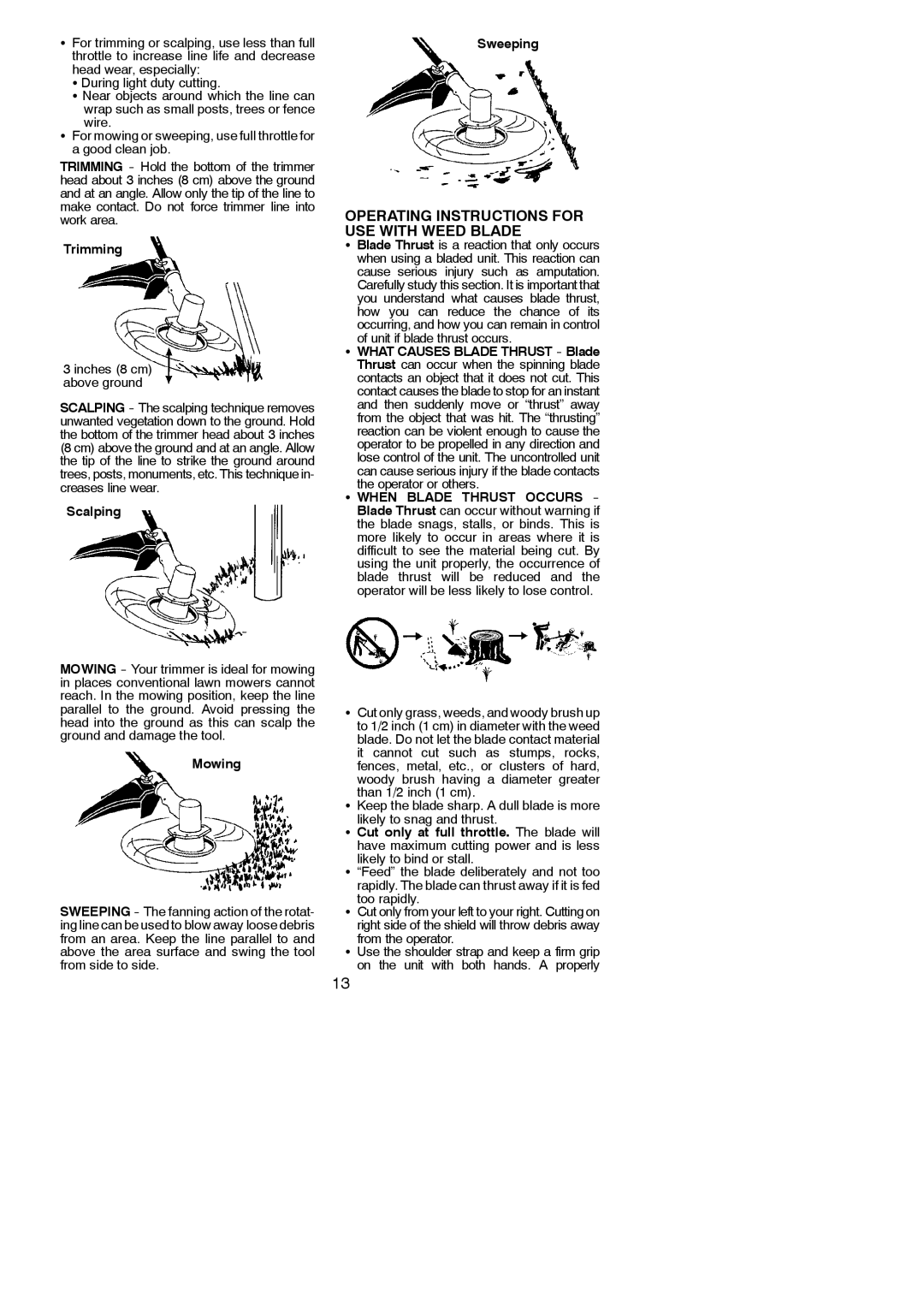
SFor trimming or scalping, use less than full throttle to increase line life and decrease head wear, especially:
S During light duty cutting.
S Near objects around which the line can wrap such as small posts, trees or fence wire.
SFor mowing or sweeping, use full throttle for a good clean job.
TRIMMING
Trimming
3 inches (8 cm) above ground
SCALPING
Scalping
Sweeping
OPERATING INSTRUCTIONS FOR USE WITH WEED BLADE
SBlade Thrust is a reaction that only occurs when using a bladed unit. This reaction can cause serious injury such as amputation. Carefully study this section. It is important that you understand what causes blade thrust, how you can reduce the chance of its occurring, and how you can remain in control
of unit if blade thrust occurs.
SWHAT CAUSES BLADE THRUST
the operator or others.
S WHEN BLADE THRUST OCCURS
the blade snags, stalls, or binds. This is more likely to occur in areas where it is difficult to see the material being cut. By using the unit properly, the occurrence of blade thrust will be reduced and the operator will be less likely to lose control.
MOWING
Mowing
SWEEPING
SCut only grass, weeds, and woody brush up to 1/2 inch (1 cm) in diameter with the weed blade. Do not let the blade contact material
it cannot cut such as stumps, rocks, fences, metal, etc., or clusters of hard, woody brush having a diameter greater than 1/2 inch (1 cm).
SKeep the blade sharp. A dull blade is more
likely to snag and thrust.
S Cut only at full throttle. The blade will have maximum cutting power and is less likely to bind or stall.
S“Feed” the blade deliberately and not too
rapidly. The blade can thrust away if it is fed too rapidly.
SCut only from your left to your right. Cutting on right side of the shield will throw debris away
from the operator.
SUse the shoulder strap and keep a firm grip on the unit with both hands. A properly
13
